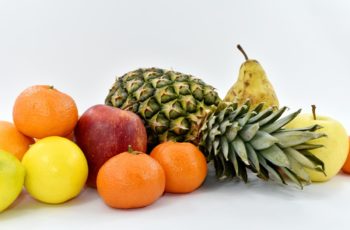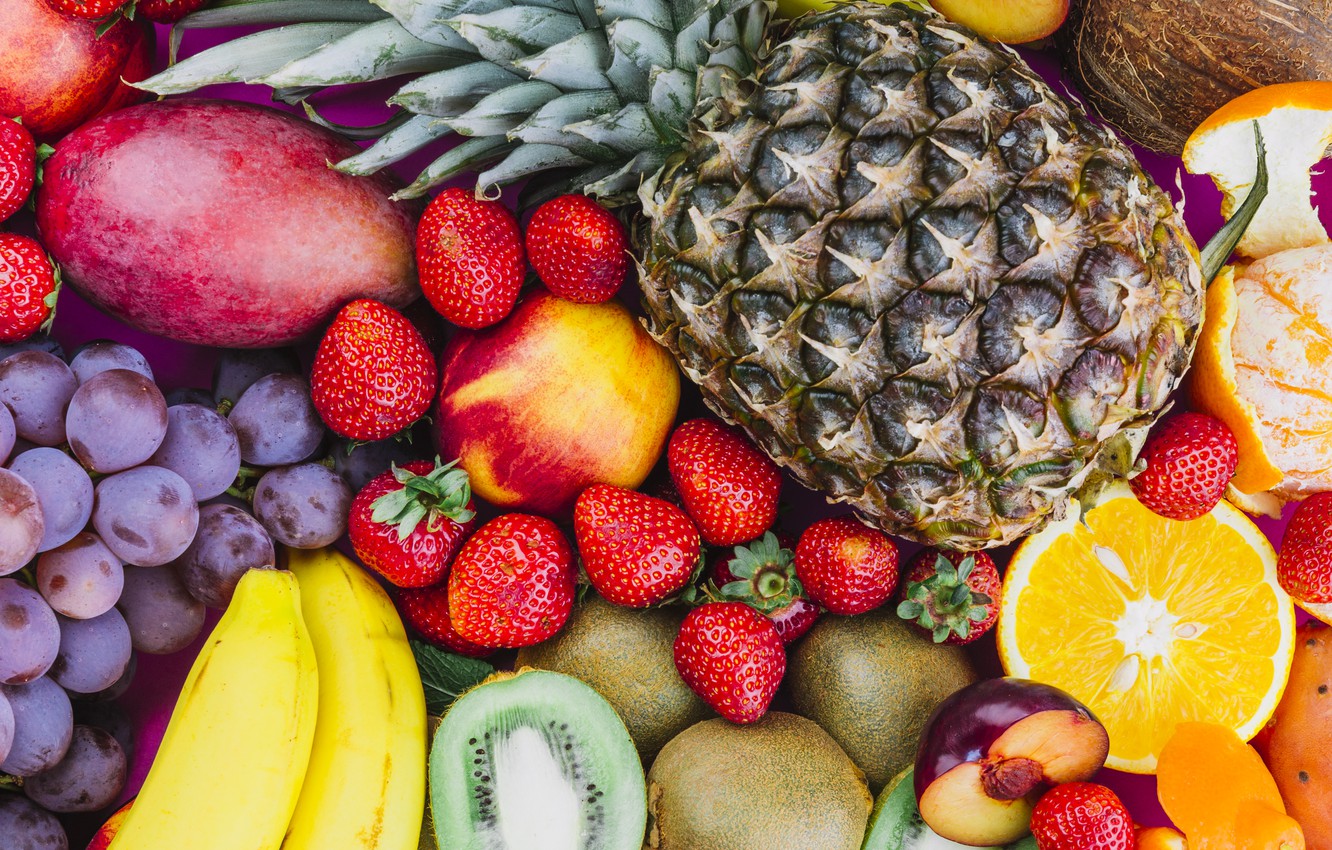
When most people think of citrus fruits, they typically think of oranges, grapefruits, and lemons. But what about pineapple? Is pineapple a citrus fruit? The answer may surprise you. In this blog post, we’ll explore the question of whether or not pineapple is a citrus fruit and discuss its nutritional benefits. Stay tuned!

What is pineapple?
Pineapple is a tropical fruit that is native to South America. It is most commonly grown in Brazil, Costa Rica, and Hawaii. Pineapple is a member of the bromeliad family, which also includes other popular fruits such as papaya and guava. The scientific name for pineapple is Ananas comosus.
Pineapple is a popular fruit because of its sweet taste and juicy texture. It is often used in smoothies, juices, and desserts. Pineapples are also a good source of vitamins and minerals, such as Vitamin C, manganese, and fiber.
Is pineapple citrus fruit?
Like citrus fruits, pineapple is sweet, juicy, tangy, full of vitamin C, and grown in tropical climates, but the similarities end there. These two types of fruit couldn’t be more different, botanically speaking. Unlike oranges, lemons, limes, and other citrus fruits, pineapples do not grow on trees. Instead, they grow on a short, leafy plant with thick, stiff leaves. The fruit is actually the result of many small flowers that fuse together around a central core. This central core is what gives pineapples their characteristic cylindrical shape.
Pineapples are often thought of as citrus fruits because of their acidic flavor. However, they are not technically classified as citrus fruits. This is because they do not belong to the Rutaceae family, which is the botanical family that includes all citrus fruits. Instead, pineapples belong to the Bromeliaceae family, which contains over 3,000 species of plants, including other popular fruits such as papaya and guava.
Finally, pineapples don’t grow from seed: Pineapple plants can’t be grown from seed like most other fruits. Instead, they are propagated from cuttings or by planting the crowns of mature pineapples.
What is a citrus fruit?
Citrus fruit is any fruit that belongs to the Rutaceae family. This family includes a wide variety of fruits, such as oranges, lemons, limes, and grapefruit. Citrus fruits are typically characterized by their tart and acidic flavor. They are also a good source of Vitamin C and other nutrients.
What kind of fruit is pineapple?
Known also by its Latin name Ananas comosus, the pineapple is a fruit that, although not belonging to the citrus family, shares many characteristics with them.
Pineapples are native to South America, and more specifically to Brazil, Costa Rica, and Paraguay, but nowadays they are also grown in Hawaii. The pineapple plant is a short and leafy one, with stiff leaves, and the fruit is the result of the fusion of many small flowers around a central core.
The origin of the name ‘pineapple’:
The name pineapple is thought to have originated from the Spanish word ‘pina’, meaning ‘pinecone’, due to the similarity in shape between a pinecone and a pineapple.
Then what are pineapples?
Pineapples are actually a bunch of berries all fused into one fruit. Each little triangle you see on the outside of a pineapple is actually an individual berry.
Pineapples are the same kind of fruit as raspberries and blackberries.
All three are known as aggregate fruits or one fruit made of many smaller sections derived from a single flower

Pineapple Nutrition
One cup (154 grams) of fresh pineapple chunks provides the following nutrients:
- Calories: 82
- Carbohydrates: 21.6 grams
- Fiber: 2.3 grams
- Protein: 1.1 grams
- Vitamin C: 131% of the Daily Value (DV)
- Manganese: 76% of the DV
- Thiamin: 9% of the DV
- Pantothenic acid: 7% of the DV
How do they grow pineapples?
What are the health benefits of eating pineapple?
Pineapple has many nutritional benefits. Here are some of the most notable ones:
Pineapple is a good source of Vitamin C.
Vitamin C is an important nutrient that helps to boost the immune system. It is also necessary for the production of collagen, which is important for healthy skin and bones. Vitamin C can be found in many foods, but it is especially abundant in citrus fruits. Pineapples are a good source of this nutrient, providing about 40% of the daily recommended value in one cup (84 grams)
Pineapple is a good source of manganese.
Manganese is a mineral that is involved in many important processes in the body, such as metabolism, bone formation, and wound healing. It is also an antioxidant, which means it helps to protect cells from damage. Pineapple is a good source of manganese, providing about 30% of the daily recommended value in one cup (84 grams) .
Pineapple is a good source of fiber.
Dietary fiber is important for many reasons. It helps to regulate digestion, can lower cholesterol levels, and may even help to prevent certain types of cancer. Fiber can be found in many plant-based foods, including fruits, vegetables, legumes, and whole grains. Pineapple is a good source of fiber, providing about 3 grams in one cup (84 grams) .
Pineapple has anti-inflammatory properties.
Pineapple contains an enzyme called bromelain, which has been shown to have anti-inflammatory properties . This means that it can help to reduce swelling and pain in the body. Bromelain is also thought to have anticancer properties .

Pineapple may improve digestion.
The fiber and enzymes in pineapple may help to improve digestion. In addition, bromelain has been shown to help break down proteins, which makes it easier for the body to digest them (4).
Pineapple may boost immunity.
The Vitamin C and antioxidants in pineapple may help to boost immunity. Additionally, bromelain has been shown to help increase the production of white blood cells, which are important for fighting infection.
Pineapples may help to prevent cancer.
The antioxidants in pineapple may help to protect cells from damage and prevent the development of cancer. In addition, bromelain has been shown to inhibit the growth of tumor cells (6).
Pineapple may improve bone health.
Manganese is important for bone health. It helps to form bones and connective tissue, and it also helps to absorb calcium. Pineapple is a good source of manganese, which means it may help to improve bone health
Pineapple may aid weight loss.
The fiber and water content in pineapple may help to promote weight loss. Fiber helps to keep you feeling full, while water helps to reduce the number of calories you consume. Additionally, pineapple is a low-calorie food, which means it can be a good addition to a weight loss diet .

What does a pineapple look like?
Pineapples are tropical fruit that is typically round or oval in shape. They have a tough, fibrous outer shell and a juicy, sweet interior. Pineapples can vary in size, but they are typically about 10 inches (25 cm) long and weigh 2-5 pounds (1-2 kg).
Pineapples have yellow or gold flesh with small, black seeds. The flesh is surrounded by a hard, spiked shell that is green when the pineapple is ripe. Pineapples are usually eaten raw, but they can also be juiced, canned, or used in baking.
What does pineapple taste like?
Pineapples have a sweet, tangy flavor. The flesh is juicy and slightly acidic, while the seeds are crunchy and have a slightly bitter taste. Pineapples are often used in sweet dishes, such as pies and cakes, but they can also be used in savory dishes, such as curries.
What are the risks of eating pineapple?
There are some risks associated with eating pineapple. Here are some of the most notable ones:
Pineapple may cause digestive issues.
The fiber in pineapple may cause digestive issues such as gas, bloating, and diarrhea in some people. If you experience these symptoms, it is best to limit your intake of pineapple or avoid it altogether (9).
Pineapple may interact with certain medications.
Bromelain, the enzyme found in pineapple, may interact with certain medications. If you are taking any medications, it is best to speak with your doctor before adding pineapple to your diet (10).
Pineapple may cause allergy symptoms.
Some people may be allergic to pineapple. Symptoms of a pineapple allergy can include itching, swelling, and difficulty breathing. If you experience these symptoms, it is important to seek medical attention immediately (11).

Ways to Enjoy Pineapples:
There are many different ways to enjoy pineapples. Here are some of the most popular ways:
-Eating pineapple raw, either on its own or as part of a fruit salad or other dish.
-Adding pineapple to smoothies or juices.
-Cooking with pineapples, such as in stir-fries, curries, or baked goods.
-Using pineapple as a topping on pancakes, waffles, or ice cream.
-Preserving pineapple by canning or pickling it.
-Drying pineapple slices to make chips or Jerky.
Pineapple Recipe:

Pineapple Upside Down Cake
Ingredients:
-1 cup (250 ml) of pineapple juice
-1/2 cup (120 ml) of brown sugar
-1/4 cup (60 ml) of butter
-1 can of pineapple slices
-1/2 cup (120 ml) of maraschino cherries
-1 cake mix
Instructions:
- Preheat the oven to 350 degrees Fahrenheit (180 degrees Celsius).
- In a saucepan, heat the pineapple juice, brown sugar, and butter until it comes to a boil.
- Pour the mixture into a 9×13 inch baking dish. Add the pineapple slices and cherries.
- Prepare the cake mix according to the package directions. Pour the batter over the pineapple and cherry mixture.
- Bake for 45 minutes, or until a toothpick inserted into the center of the cake comes out clean.
- Let the cake cool for 10 minutes before inverting it onto a plate. Serve warm or cold. Enjoy!
How to select and store pineapples:
When selecting a pineapple, look for one that is heavy for its size and has fresh-looking leaves. The bottom of the pineapple should smell sweet. Avoid pineapples that are mushy or have brown spots.
To store a pineapple, cut off the crown and leaves, and then store the fruit in a plastic bag in the refrigerator. Pineapples can be stored in the fridge for up to 5 days.
Pineapple Fun Facts:
-Pineapples are native to South America and were first introduced to Europe in the 16th century.
-The word “pineapple” comes from the Spanish word “piña”, which means “pinecone”.
-Pineapples are a member of the bromeliad family, which includes plants such as Spanish moss and Tillandsia.
-Pineapples are the only fruit that has its own emoji.
-Pineapples are a symbol of hospitality.
-The state of Hawaii is the only US state that commercially produces pineapples.

FAQs
How to tell if a pineapple is ripe?
A ripe pineapple will be heavy for its size and have fresh-looking leaves. The bottom of the pineapple should smell sweet. Avoid pineapples that are mushy or have brown spots.
Can you eat the core of a pineapple?
Yes, you can eat the core of a pineapple. The core is the white part of the pineapple that is surrounded by the flesh. It is slightly tougher than the rest of the fruit, but it is still edible.
Can dogs eat pineapple?
Yes, dogs can eat pineapple. Pineapple is a good source of vitamins, minerals, and antioxidants. However, it is important to give your dog only a small amount of pineapple as too much can cause digestive issues.
Can We Eat Pineapple at Night?
Pineapple is a healthy fruit that can be eaten at night. However, it is important to limit your intake of pineapple as it contains a high amount of sugar. Eating too much pineapple can cause digestive issues and may interfere with sleep.
Learn More About Grilling
If you want to learn more about grilling, check out these other helpful resources!











